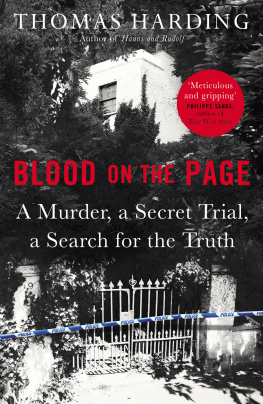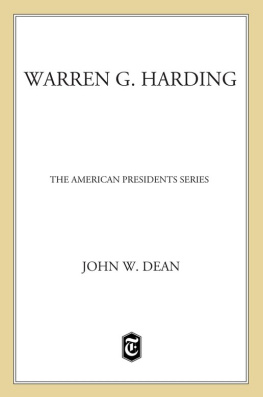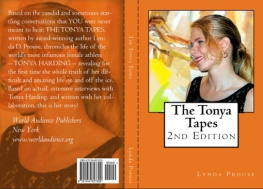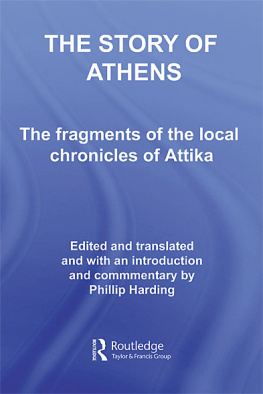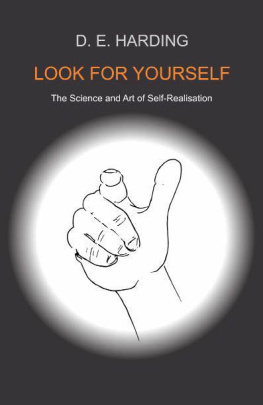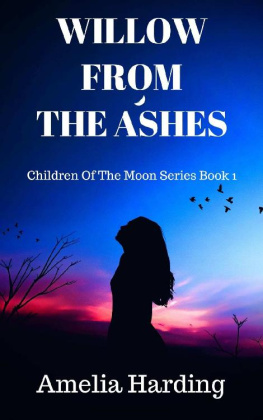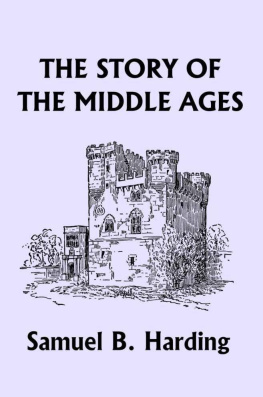GOOD COP/BAD COP
A True Story of Murder and Mayhem

Copyright 1994 by Rebecca H. Cofer with David McElligott
All rights reserved. No portion of this book may be reproduced or transmitted in any form whatsoever, including electronic, mechanical, or any information storage or retrieval system, except as may be expressly permitted in the 1976 Copyright Act.
Requests for permission should be addressed to:
New Horizon Press
P.O. Box 669
Far Hills, NJ 07931
Cofer, Rebecca, with David McElligott.
Good Cop/Bad Cop: A True Story of Murder and Mayhem
Library of Congress Catalog Card Number: 93-61694
ISBN-13 (eBook): 978-0-88282-508-3
New Horizon Press
1998 1997 1996 1995 1994 / 5 4 3 2 1
Dedicated to the Memory
of
Tony, Dodie, Shelby and Marc Harris
and
the efforts of
The New York State Police,
The City of Ithaca Police Department,
and the Tompkins County Sheriffs Department
ACKNOWLEDGMENTS
My deepest thanks goes to Senior Investigator David McElligott for his unusually patient and generous part in supplying information concerning the investigation of the Harris murders and David L. Harding. In many instances, the details he was able to provide had never before been made public.
I am also indebted to the many investigators and troopers with the New York State Police and to local police officers who talked with me with unfailing courtesy and openness during almost three years of my research and writing. Their input was crucial to telling the story of this investigation.
Also, I am grateful to Tompkins County District Attorney George Dentes, to Senior Investigator Karl Chandler, to New York State Police Chief Inspector Francis DeFrancesco, to defense attorney Bill Sullivan and to the special prosecutor Nelson Roth for their valuable contributions.
I would like to thank Mary Harris, Don and Patricia Lake and other Syracuse family members and friends for sharing with me their remembrances of Tony, Dodie, Shelby and Marc. I am also grateful to the Harrises friends in Marietta, Georgia, who talked with me about the Harrises they knew and loved.
Though there were some Harris friends and neighbors in Ellis Hollow who wished not to be interviewed for reasons of privacy or because they were still pained by the tragedy, I am extremely grateful to those who came forward. Dennis and Elizabeth Regan not only were willing to talk with me, but made me feel the project was worthwhile from the very beginning. Without people like the Regans, I may not have persevered.
My sincere thanks to Ed Reynolds and Doris Rosenblum of Manhattans Westside Alternate High School for their cooperation.
I am grateful to Dr. Charles Bahn, a forensic psychologist at John Jay College of Criminal Justice in New York City and to Dr. Murray Miron, a sociologist at Syracuse University, for helping me gain a better understanding of the psychopathic personality.
Others who made a real difference with their personal support were Robin Cofer, Carolyn Lindquist, Maureen Aung-Thwin and Louis Kraar. And many thanks to my husband, Bob, for his computer assistance and for believing I could do it.
In addition to interviews, court transcripts, written accounts of the story which were valuable appeared in The Ithaca Journal, The Syracuse Post-Standard, The Binghamton Sun-Bulletin, and in Tompkins County court records. Other important written sources included The Harris Family; Ellis Hollow Lore by Zelle Middaugh Pritchard, 1962; The Peopling of Tompkins County by Carol Kammen, 1985; and A Short History of Tompkins Country by Jane Dieckman, 1986.
Photos begin on page 133
CONTENTS
The Harris family tragedy and its aftermath takes us beyond the edge of evil into the heart of darkness that shows us how a depraved man can act and how that brand of wanton terror can leave us with permanent scars of suspicion and vulnerability. The story and all its horror reflects many of contemporary societys problemsracist attitudes, friction between the poor and wealthy, as well as humanitys oldest sins of mendacity, lust, and revenge.
When I started gathering material, this was to be the story of the Harris family murders, how they sent terror through our quiet college town in upstate New York two days before Christmas in 1989, and how the crimes were solved by the state police in only six and a half weeks. But just as I finished my first draft of the manuscript, a completely unexpected revelation came to light which dramatically changed the thrust of the story. The case was catapulted into widespread notoriety, exposing the deception of one primary police investigator and his partner. Their duplicity put the Harris investigation and the practices of police everywhere into question.
GOOD COP/BAD COP is a primarily factual account of events as they evolved from December 1989 to December 1992. The incidents and dialogue are based upon over fifty interviews with police, lawyers, educators and the neighbors, friends and family of the characters, as well as input from numerous court records and newspaper articles.
Shirley Kinge, Sallie Reese, and Joanna White refused requests for interviews. Since Michael Kinge was dead, information was obtained from those willing to talk with me, officials and public documents.
Only in a few instances have the names of individuals been changed to protect their privacy. Additional incidents and dialogue have been deduced from known facts, interviews with police, lawyers, educators and neighbors, friends and family of the characters, as well as input from numerous court records and newspaper articles.
The randomness and brutality of the murders plunged Ithaca into a new era. No longer do we leave our doors unlocked or freely offer help to strangers. The Kinge case, the Harding case, and their aftermath have changed our assumptions about the criminal justice system. The lies of police officers are a firm reminder that individual integrity forms the core of our faith in any law enforcement organization and when it is corrupted, faith fails.
Real justice finally prevailed only after a tortuous journey through specious justice, public cynicism, racism, mass disillusionment and private burdens. We witnessed an example of clumsy democracy in slow-motion. Not pretty, but better than the alternatives.
Rebecca H. Cofer
Tony Harris woke up Friday, December 22, to the loud scraping of a snow plows blades as it roared along Ellis Hollow Road. It was a familiar early morning sound in the winter that could be heard for miles around. Tony strained to hear the 6:45 weather report coming over WHCU: Currently five degrees in Ithaca with more snow predicted for today and tonight. Fifteen below zero tonight. Snow flurries on Saturday with a high of six degrees.
Next page



